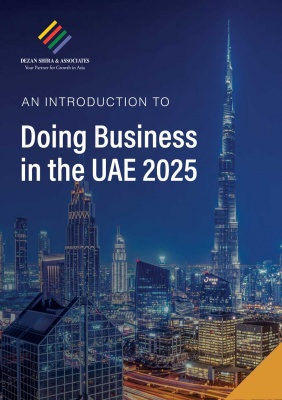Oman Expands Industrial Landscape with New Economic Zones
The Public Authority for Special Economic Zones and Free Zones (OPAZ) has embarked on an ambitious initiative to develop new industrial cities across Oman. This strategic move aims to attract investments, bolster the country’s industrial sector, and create employment opportunities for Omani youth.
Expanding industrial infrastructure in Oman
In collaboration with the Public Establishment for Industrial Estates (Madayn), OPAZ is advancing multiple industrial city projects. Among the notable developments are:
- Mahas Industrial City, Khasab (Musandam Governorate): Infrastructure and road development agreements signed in October 2023.
- Al Mudhaibi Industrial City: Initial investment projects localized and infrastructure tenders open to Omani and Saudi companies.
- Thamrait Industrial City (Dhofar Governorate): Completion of consultancy services for design and construction supervision.
- Seeh Al Sarya Industrial City: Master plan finalized.
- Madha Industrial City (Seih Al Wasat): Consultancy services contract awarded for master plan and detailed design.
- Al Suwaiq Industrial City: Consultancy tender in progress.
- Al Wadi Al Kabir Industrial City: Plans under review.
- Shinas Industrial City: Land allocation discussions ongoing.
The expansion of industrial zones aligns with the broader surge in Oman’s special economic zones and free zones. By the end of 2024, OPAZ reported a total of 183 industrial licenses, with industrial cities accounting for 125, or 68 percent, of the total. This reflects Oman’s commitment to industrial diversification under the Industrial Strategy 2040, which focuses on modernizing manufacturing through technological advancements and government incentives.
Special economic zones and free zones offer investment-ready land, tax and customs exemptions, and seamless connectivity to ports and airports. These advantages support industries across the spectrum, from heavy and medium manufacturing to light industrial operations.
Key industrial zones in Oman
Currently, 2,012 industrial establishments operate within OPAZ-supervised zones, spanning diverse sectors such as food production, pharmaceuticals, textiles, petrochemicals, and metal industries. Micro enterprises form 65 percent of all establishments, with a total workforce exceeding 42,000, of which 24 percent are Omani nationals.
Key industrial hubs driving investment in Oman include:
- Special Economic Zone at Duqm (SEZAD): Home to the Duqm Refinery, crude oil storage facilities, and emerging green industries.
- Al Mazunah Free Zone: Specializing in import-export activities, food processing, and packaging.
- Salalah Free Zone: Attracting pharmaceutical, petrochemical, and mining investments.
- Sohar Free Zone: A center for mining, ceramics, veterinary products, and construction materials.
- Madayn Industrial Cities: Supporting sectors such as building materials, chemicals, food industries, pharmaceuticals, and plastics manufacturing.
Oman Industrial Strategy 2040
In June 2024, Sultan Haitham bin Tariq adopted the Industrial Strategy 2040 to drive economic diversification, enhance the competitiveness of Omani industries, and establish a modern, technology-driven manufacturing base. A key initiative under this strategy includes incentivizing the transformation of limited liability companies into joint-stock companies, fostering a more dynamic industrial sector.
Qais bin Mohammed Al Yousef, Minister of Commerce, Industry, and Investment Promotion, emphasized that the industrial sector is a cornerstone of Oman’s diversification efforts, contributing 9 percent to GDP at current prices by the end of 2023. Developed in partnership with the United Nations Industrial Development Organization (UNIDO), the 2040 Industrial Strategy aligns with global economic trends and Oman Vision 2040 to enhance industrial growth and sustainability.
Goals under Industrial Strategy 2040:
- Triple the contribution of the manufacturing sector to GDP by 2024, reaching RO 11 billion.
- Expanding industrial exports to RO 25 billion by 2040.
- Achieving a total investment volume of RO 40 billion in the industrial sector.
Oman seeks to leverage Fourth Industrial Revolution technologies, including artificial intelligence, to boost efficiency, improve product quality, and promote environmental sustainability. The 2040 Industrial Strategy identifies 30 priority sectors, classified into natural resource-based industries, capital-intensive industries, and knowledge-based industries, fostering an advanced industrial ecosystem.
Outlook
With a strategic vision to strengthen its industrial ecosystem, Oman is positioning itself as a competitive hub for regional and international investments. By leveraging world-class infrastructure, emerging technologies, and investor-friendly policies, the Sultanate is set to drive sustainable industrial growth in the Gulf region and economic diversification in the years ahead.
About Us
Middle East Briefing is one of five regional publications under the Asia Briefing brand. It is supported by Dezan Shira & Associates, a pan-Asia, multi-disciplinary professional services firm that assists foreign investors throughout Asia, including through offices in Dubai (UAE), China, India, Vietnam, Singapore, Indonesia, Italy, Germany, and USA. We also have partner firms in Malaysia, Bangladesh, the Philippines, Thailand, and Australia.
For support with establishing a business in the Middle East, or for assistance in analyzing and entering markets elsewhere in Asia, please contact us at dubai@dezshira.com or visit us at www.dezshira.com. To subscribe for content products from the Middle East Briefing, please click here.


